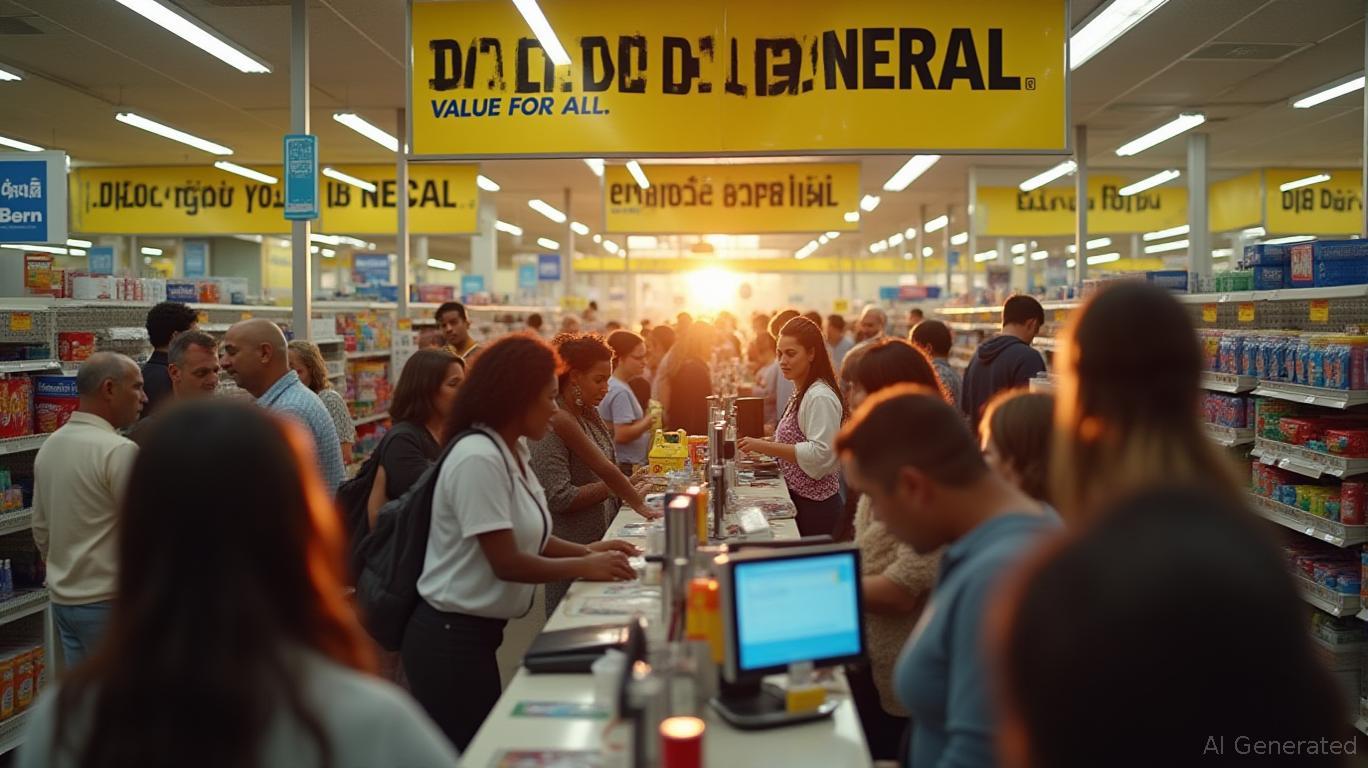Dollar General's Dual Dilemma: Navigating Sales Growth Amid Margin Meltdown and Credit Strain

Dollar General (NYSE:DG) finds itself in a precarious balancing act. Despite reporting year-over-year sales growth in Q4 2024, the discount retailer’s profitability has cratered under the weight of strategic store closures, inflationary pressures, and operational inefficiencies. The fallout has prompted Moody’s to downgrade its credit rating to Baa3, the lowest investment-grade status, signaling growing concerns about the company’s ability to sustain its financial health in a challenging retail environment.
The Sales Growth Mirage
Dollar General’s Q4 results revealed a classic case of “top-line success, bottom-line failure.” Net sales rose 4.5% to $10.3 billion, driven by 960 new stores and a 1.2% same-store sales increase. However, operating profit plunged 49% to $294.2 million, with diluted EPS collapsing 52.5% to $0.87. The culprit? A $232 million charge tied to closing 96 stores and impairing 45 pOpshelf locations—a move aimed at optimizing its real estate portfolio.
While consumables (e.g., groceries, household essentials) performed strongly, weaker demand for seasonal items, apparel, and home goods dragged down margins. Gross profit margins contracted to 29.4% in Q4, with rising inventory markdowns and distribution costs exacerbating the pain.
Credit Downgrade: A Warning Bell
Moody’s downgrade reflects heightened scrutiny of Dollar General’s deteriorating financial metrics. Key metrics include:
- Debt-to-EBITDA: 3.6x as of Q4 2024 (up from 2.8x in 2021).
- EBIT-to-interest coverage: 3.1x, below the 4.75x threshold Moody’s deems healthy.
The rating agency highlighted the company’s geographic concentration (60% of stores in the Southern U.S.), rising input costs, and reliance on price-sensitive customers as vulnerabilities. While Dollar General paused share buybacks and redirected cash flow toward debt reduction, leverage remains elevated. Moody’s stable outlook assumes gradual improvements, but the path to recovery is fraught with risks.

Operational Headwinds and Strategic Shifts
The company’s strategy—closing underperforming stores and prioritizing remodels—aims to boost efficiency. Plans include 575 new U.S. stores in 2025 and 2,000 store remodels, reflecting a pivot toward modernizing its footprint. However, execution risks loom large. Labor costs, supply chain disruptions, and inflation remain stubborn headwinds.
Management’s 2025 guidance projects net sales growth of 3.4–4.4%, with EPS of $5.10–$5.80—a stark contrast to 2024’s $5.11 EPS. The dividend was maintained at $0.59 per share, signaling confidence in liquidity despite weak earnings.
The Road Ahead: Risks and Opportunities
For an upgrade, Moody’s demands sustained EBIT margins of 7%, debt/EBITDA below 3.25x, and EBIT/interest coverage above 4.75x. Given current metrics, this will require aggressive cost-cutting and margin expansion.
The Southern U.S. market’s sensitivity to economic downturns poses a geographic risk, while rising wages and distribution costs threaten profitability. Conversely, Dollar General’s scale—18,000+ stores—and focus on essential goods offer resilience in recessions.
Investors must weigh these factors against the company’s long-term goals: 3.5–4% annual sales growth, 2–3% same-store sales growth, and 6–7% operating margins by 2028–2029. Achieving these targets hinges on successful store optimization, technology investments (e.g., inventory management), and navigating inflationary pressures.
Conclusion: A Fragile Rebound?
Dollar General’s story is one of strategic retrenchment in a high-pressure sector. While sales growth persists, the company’s ability to restore margins and deleverage will determine its credit trajectory. Moody’s stable outlook offers cautious optimism, but the path to investment-grade stability requires overcoming persistent operational and macroeconomic headwinds.
Investors should monitor key metrics:
- Debt-to-EBITDA: Must trend below 3.25x.
- Same-store sales growth: A 1.2–2.2% target in 2025 is modest but achievable.
- Margin recovery: Gross and operating margins need stabilization, particularly in discretionary categories.
For now, DG remains a high-risk, high-reward play. Success depends on balancing aggressive cost discipline with the delicate task of maintaining customer loyalty in a price-sensitive market. The downgrade is a wake-up call—but not yet a death knell.

Final Take: Dollar General’s ability to navigate this dual challenge of top-line growth and margin recovery will define its prospects. Investors should proceed with caution, prioritizing liquidity and margin trends over short-term sales figures. The road to recovery is narrow, but the company’s foundational strengths—scale, diversification, and resilience—offer hope for a comeback.



_219eac971750077834984.jpeg)






